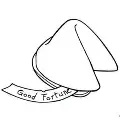Do you love pizza? Who doesn’t love pizza? I love pizza. I love pizza so, so much. Such an incredible culinary invention. What about BARS? No, no. Not the type of bars you’re probably thinking of (…where everybody knows your name). I’m referring to behaviorally anchored rating scales (BARS). I love BARS too. Not as much as I love pizza but still, it brought me to this logical inquiry: Why not use pizza to show readers the usefulness of behaviorally anchored rating scales?
Hopefully, I don’t need to explain to you what a pizza is. But what the heck is a behaviorally anchored rating scale? Well, BARS are like old-fashioned rating scales with a little extra pizzaz (see what I did there?)! BARS takes your standard 1-5 type scale and bolsters it with specific behaviors, characteristics, and/or performance measures that reflect each rating. In turn, this provides a more accurate score reflecting some performance outcomes.
Most commonly, BARS is used as a performance management tool (think job performance). On that note, we’re going to have a little out of the pizza box fun with BARS. For our purpose, the performance outcome is the quality of the pizza itself, which might allow us to evaluate one major dimension of a pizza chef’s job performance. If I was running a pizzeria, I’d certainly want to ensure that the pizza-pies served up by my chef[s] are consistent of superior quality, which leads us to our million-dollar question:
What exactly are the characteristics of a top-notch pizza chef (level 5) and how does one even identify that?
Well, it starts with good ole-fashioned research and, lucky for you, I have done decades of research on this topic! All kidding aside, when creating BARS for job performance, you should identify relative performance dimensions, collect information about critical incidents (specific characteristics or behaviors that represent effective and ineffective performance related to the target performance dimension), re-translate (or re-classify) those critical incidents to achieve group consensus and create the final performance rating tool (i.e., behaviorally anchored rating scale). I’m not going to go into detail about that process in this post; we’ll just have to save that deep dive for a future blog.
For this exercise, let’s base our ratings on a pizza chef’s creation of a standard cheese pie. We’ll use a 5-point scale with five representing the highest score and one reflecting the lowest score. Know that I’ve run these critical incidents past a select group of raters to best reflect this dimension of a pizza chef’s performance. We’ve come to a consensus on our critical incidents and so, without further ado…
A pizza chef who gets a 5 for their performance might create a pizza that has:
- Perfect sauce to cheese ratio.
- High quality ingredients providing an agreeable taste to one’s palette.
- Minimal greasiness.
- Perfect temperature for safe consumption (i.e., not burn your mouth hot and not lukewarm or cold).
- Solid structural integrity (i.e., no flop or tip flop only).
- Cheese stays on pizza rather than sliding off or coming off in gobs.
- Perfect balance of crispy/crunchy crust and slight dough fluff.
- An overall pleasant visual appeal.
A pizza chef who gets a 4 for their performance might create a pizza that has:
- Perfect to good sauce to cheese ratio (i.e., a bit too much or too little sauce or cheese).
- Good quality ingredients providing an acceptable taste to one’s palette.
- Minimal to moderate greasiness.
- Too hot to eat safely (i.e., requiring one to wait, blow on pizza to cool it down, or risk burning one’s mouth to consume immediately).
- Good structural integrity (i.e., apex flop only).
- Cheese mostly stays on pizza and does not come off in gobs.
- Bit too crispy/crunchy crust and/or too much dough fluff.
- Good visual appeal.
A level 3 pizza chef performance might be reflected by:
- Good sauce to cheese ratio (i.e., a bit too much or too little sauce or cheese).
- Good quality ingredients providing an acceptable taste to one’s palette.
- Moderate greasiness.
- Too hot to eat safely or lukewarm.
- Good structural integrity (i.e., apex flop only).
- Cheese stays on pizza and does not come off in gobs.
- Slight crunch to crust and/or too much dough fluff.
- Acceptable visual appeal.
For a level 2 performance, a pizza chef might create a pizza that has:
- Poor sauce to cheese ratio (i.e., too much or too little sauce or cheese).
- Questionable quality ingredients providing a less than acceptable taste to one’s palette.
- Moderate to maximum greasiness.
- Too hot to eat safely or lukewarm.
- Poor structural integrity (i.e., full flop requiring one to fold pizza in half vertically for proper consumption – this does not include pizzas that are designed to be eaten this way like a NY-style pie).
- Cheese slides off pizza or comes off in gobs.
- Overcooked (i.e., burnt) and/or doughy crust (i.e., minimal to no crunch).
- Less than acceptable visual appeal.
A level 1 pizza chef performance might involve a pizza the has:
- Poor sauce to cheese ratio (i.e., too much or too little sauce or cheese).
- Poor quality ingredients providing an unacceptable taste to one’s palette
- Moderate to maximum greasiness.
- Lukewarm or cold.
- Poor structural integrity (i.e., full flop – requiring one to fold pizza in half vertically for proper consumption – this does not include pizzas that are designed to be eaten this way like a NY-style pie).
- Cheese that slides off pizza or comes off in gobs.
- Doughy or poorly cooked crust (i.e., no crunch) or overcooked (i.e., burnt).
- Visually unappealing.
 By using our site, you consent to our use of cookies to enhance functionality and analyze site performance.
By using our site, you consent to our use of cookies to enhance functionality and analyze site performance.